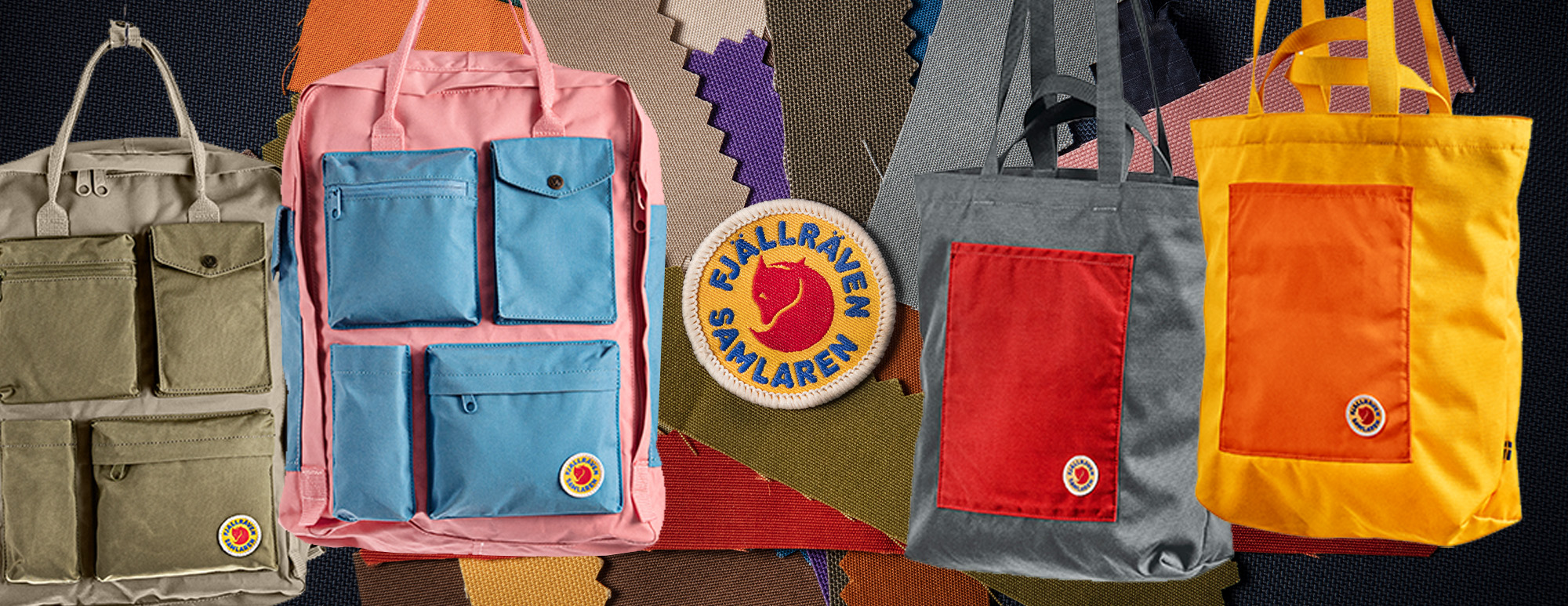Introducing Fjällräven Samlaren: The Pioneering Sustainable Initiative Changing The Game
We chat with Head of Sustainability Christiane Dolva Törnberg and Global Creative Director Henrik Andersson about the incoming capsule.
Samlaren is Fjällräven’s inspiring new initiative you’re gonna wish you’d heard about sooner. Breathing new life into surplus material left over from mills and factories, Fjällräven creates an original line of unique collectibles, releasing in exclusive limited edition capsule collections. Speaking on the idea behind Samlaren (Swedish for ‘The Gatherer’), Fjällräven states that the brand’s aim was to “create an initiative for sustainability and innovation with the mission to explore circularity and create inspiration for a better and more sustainable future.”
Fjällräven has always held sustainability as one of its core values. In 1964, four years after the brand was created, founder Ake Nordin kept a roll of fabric that was left unused in the creation of his innovative Thermo-Tent. This same roll of fabric was then used to create the first Greenland Jacket a few years later. The label continues their commitment to sustainability with Samlaren, combining their ethics with a series of unique and functional designs that boast both reliability and durability, hand in hand with some incredible aesthetics.

Samlaren’s first drop – arriving on 1st March – consists of a curated collection of new iterations of Fjällräven classics. Made from surplus G-1000 fabric, the drop includes the intrinsically sustainable Greenland Jacket in color block patchwork, the iconic Kanken backpack and new iterations of the tote bag and cap.
How would you introduce Samlaren to someone new to the Fjällräven brand?
Henrik: Samlaren is a collection of products, made from left-over materials.We strive to minimize our environmental impact wherever we can, and we wanted to find a way to turn our own “trash” into functional and durable products. By the nature of the varying and mostly low quantities of fabrics and colours, we had to be creative in putting the products together and allowed ourselves to be bit more playful in piecing them together.
Christiane: Samlaren is a project under our umbrella initiative “Zero Waste”. We consider waste as lost potential and Samlaren is a great example of how we can minimize waste by giving leftover fabrics new life as limited-edition pieces.

How can sustainable fashion contribute to reducing material production emissions?
Christiane: For us, the most important sustainability feature of any product is that it can last for a long time and that it is timeless and durable so we make the most out of the resources that are used. The majority of a product’s carbon footprint or environmental impact is created during the production of materials. This means that the longer a product can be used because it is durable and functional and the longer people are also willing to wear and use it because it is timeless and doesn’t fall out of fashion, the more we put the impact that it has had to use. A product that lasts doesn’t need to be replaced by a new product with a new carbon footprint. Additionally we of course always do our utmost to minimize the material emissions by carefully selecting preferred fibers and materials and scrutinizing the production process. When talking about sustainable fashion it is important to understand that sustainability is not a single feature or material. It needs to be considered when designing, choosing one material over another, and when deciding where to produce for example. It is always a balancing act that cannot be underestimated and, when done right, influences all parts of a product and even all of the company’s operations.
Christiane, you mentioned that the brand considers waste as lost potential. Do you think that the fashion industry prioritizes profit over maximizing material use?
Christiane: I think that maximizing material use is actually one of the many areas where sustainable considerations become a win win. Careful use of resources means savings, not only on the environmental side but also the economic side. So to me, maximizing material use goes hand in hand with an economic focus.

Why do you think consumers are questioning the ethics of a product before they purchase now more than ever?
Christiane: I believe that the growing awareness around the environmental and ethical footprint of a product that you want to purchase comes from an increased dialogue and awareness around these topics in the society in general. One contributing factor is definitely the discussion around climate change. Climate change is real, and it is affecting every country on every continent. Weather patterns are changing, sea levels are rising, weather events are becoming more extreme and greenhouse gas emissions are now at their highest levels in history. These are things that people are experiencing in their lives today and with the effects of the climate change being so noticeable there is of course also an increasing awareness for those topics in the society. Many people have understood that actions also on an individual level matter, and that investing in products that last, that have a conscious approach to sustainability and supporting brands with values that people can identify with is one way of taking action.
How do sustainability requirements affect the cost of an item?
Christiane: Today there are definitely parts of sustainability choices that come with an added cost. Conventional materials are often lower in price than their more sustainable counterparts, and also quality comes with a cost. But there are also requirements that can create win-win scenarios. For example, when resource efficiencies identified by a sustainability requirement lead to more efficient processes in general, which then can save costs. I’m sure that we will see a similar development in these “green premiums” as we have seen for example in renewable energy sources that used to be more costly but are now even cheaper than their fossil alternative.

Henrik, you described Samlaren’s first drop as a blend between classic products and constructions. Can you predict how the design element could change over time?
Henrik: This will depend on what materials we have on stock. Next time the products could be rather similar, or they can venture into new areas and fields of use. It just depends on the frame we are getting, and in what ways we can create the most use and value for our users. But in general, simplicity in design and sustainable durable materials are things that we will continue to put our focus on– that implies using recycled materials, develop new sustainable and durable constructions and fabrics and ensuring the repairability and recyclability of our products. All this in connection with a timeless design that makes our products relevant for many seasons and hopefully even generations to come.
Do you think it’s viable for the majority – if not the entirety – of the fashion industry to commit to a zero-waste policy?
Christiane: Yes, I do think it is viable. I do believe that the many interesting movements within the framework of circular economy are creating models and ways of working that adress waste and find ways to ensure it is reduced, eliminated, reused or recycled. Circularity is an important part of how I believe the entire industry needs to develop, and in it I do think there is a viable roadmap towards zero waste.
Is it ever possible for sustainability to somehow be incorporated into fast fashion?
Christiane: Fast fashion is based on the idea of creating products that only last for a short time respectively that are only relevant for one or even less than one season. Considering that the production of a garment is a very resource-consuming process making up a huge percentage of the environmental footprint and that in a fast-fashion environment this garment is made to only last for a couple of months and will then end in landfills I do think it is going to be hard for fast fashion to become more sustainable without addressing the business model. At Fjällräven we have decided to make products that last instead of following trends, which is one important step in our efforts to become more sustainable. But at the same time, I think that by working together in the entire textile industry, we can create a lot of the solutions needed to take further steps towards a more sustainable mode.


What does the future of Samlaren look like?
Henrik: The long-term vision is actually to eliminate the need for this concept to start with, by minimizing waste and leftover fabrics in the production. This may however take some time so in the meanwhile we will use Samlaren as a way to turn hard-to-use leftovers into want-to-use products.
Discover Fjällräven Samlaren here.













